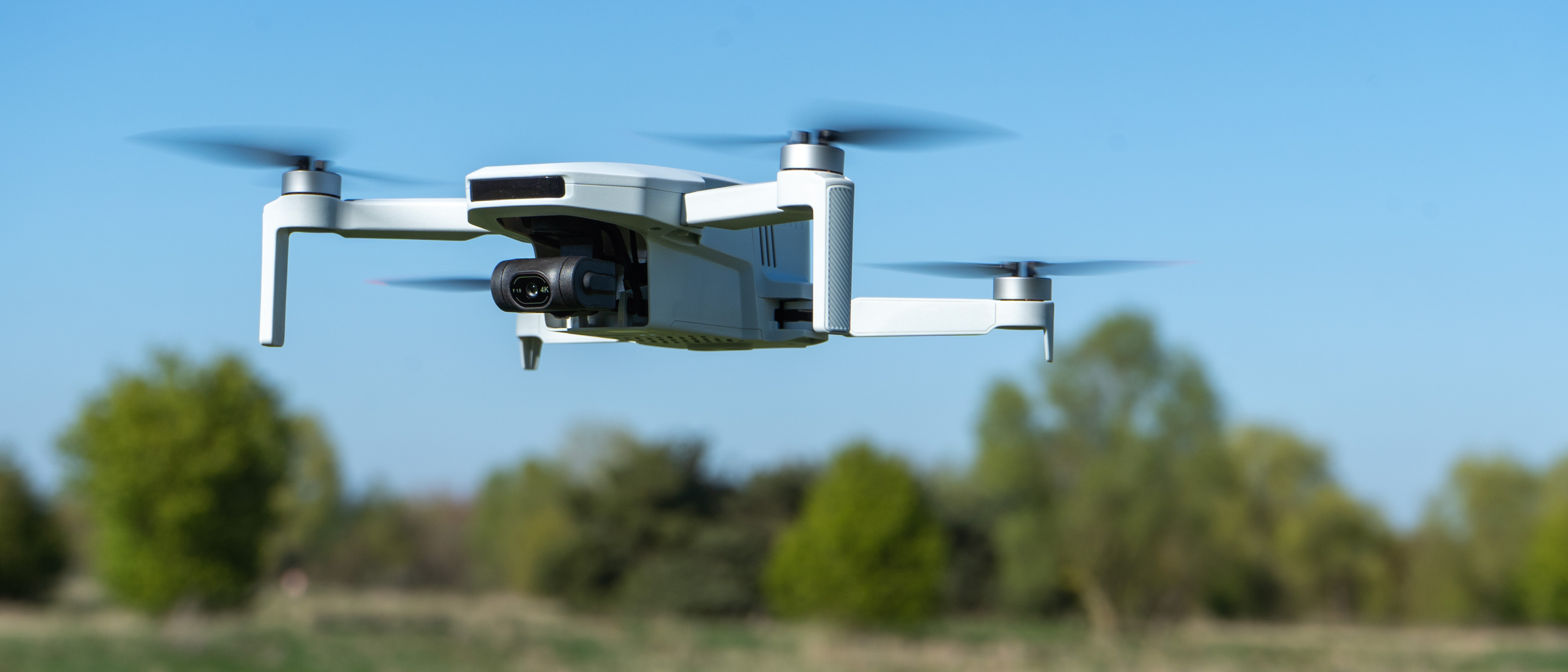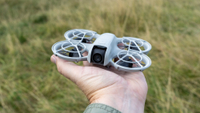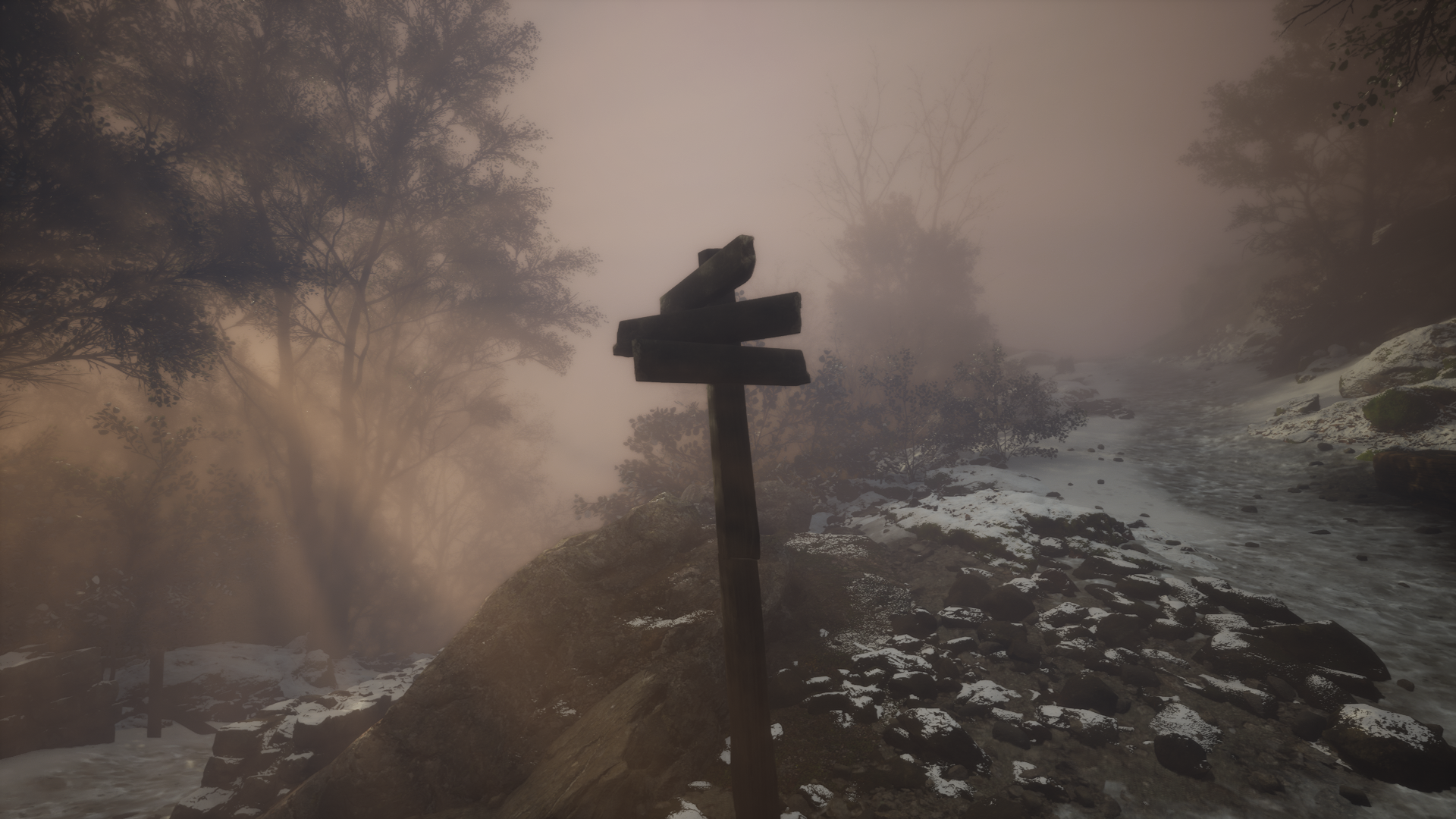Digital Camera World Verdict
Pros
- +
4K camera with good image stabilization even in gusts
- +
Excellent AI subject tracking
- +
48 Megapixel stills
- +
Robust and much-improved controller
Cons
- -
Range alerts came earlier than expected
- -
Gimbal warnings required power cycling
Why you can trust Digital Camera World
The original Potensic Atom drone came in two variants, the Atom and the Atom SE, the later eschewing a motorised gimbal to keep costs down. Nevertheless by aping the style of the DJI Mini series, the drones showed that Potensic had a good deal more potential than many had suspected. Moreover with an innovative controller design there seemed to be even more potential.
The new Atom 2 builds on exactly that, taking an accessibly priced family friendly lightweight drone (light enough to side-step most regulations), and improves on the less visible aspects – especially the camera and the radio control.
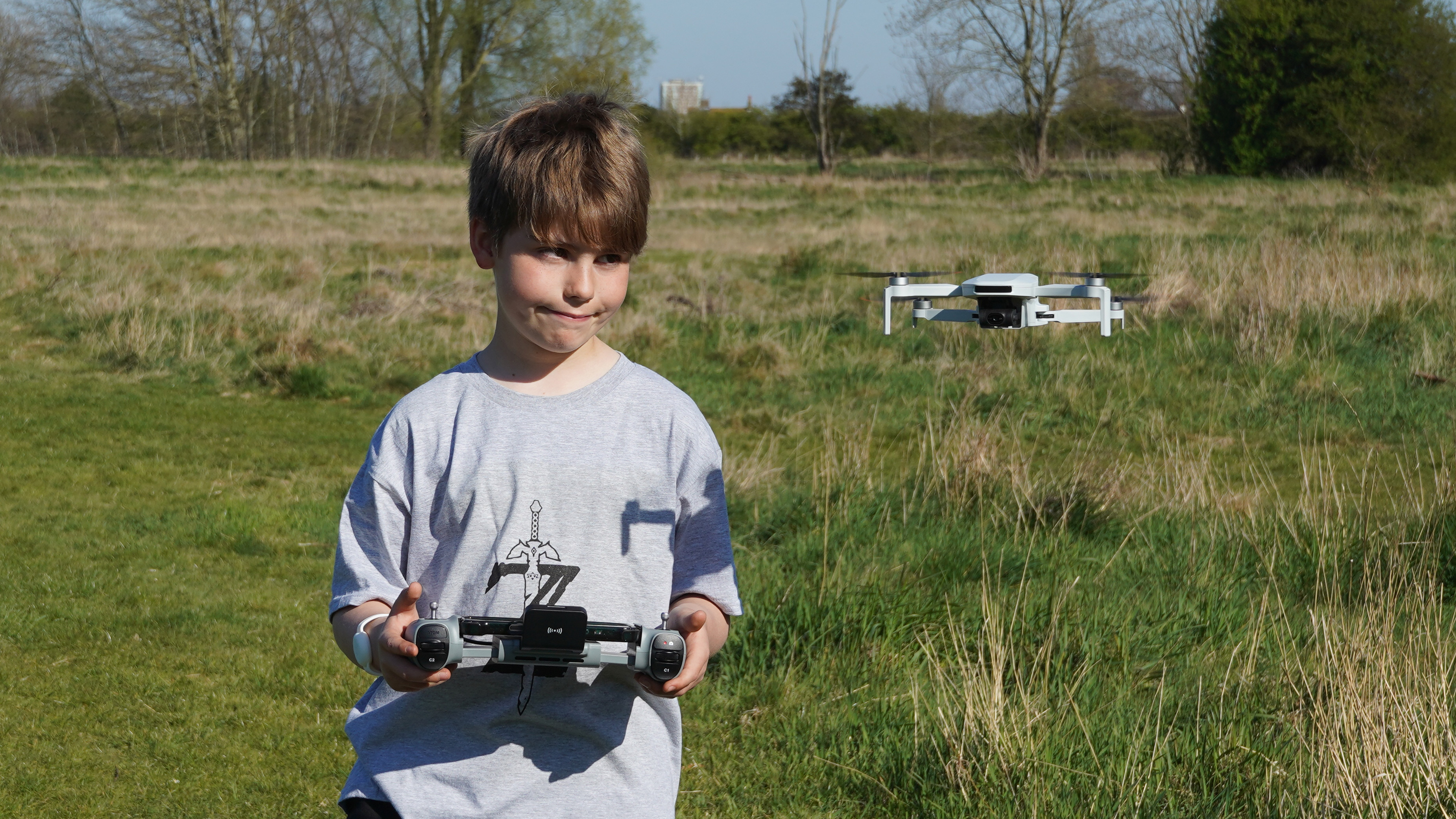
Potensic also chose this edition to discard the app (which I happened to quite like) and replace it with a new one which has streamlined the feature set, putting AI functionality ahead of geeky features that appealed to established drone experts (like me, your reviewer). That means out with the waypoint mission planning, for now, but in with, well, let's see...
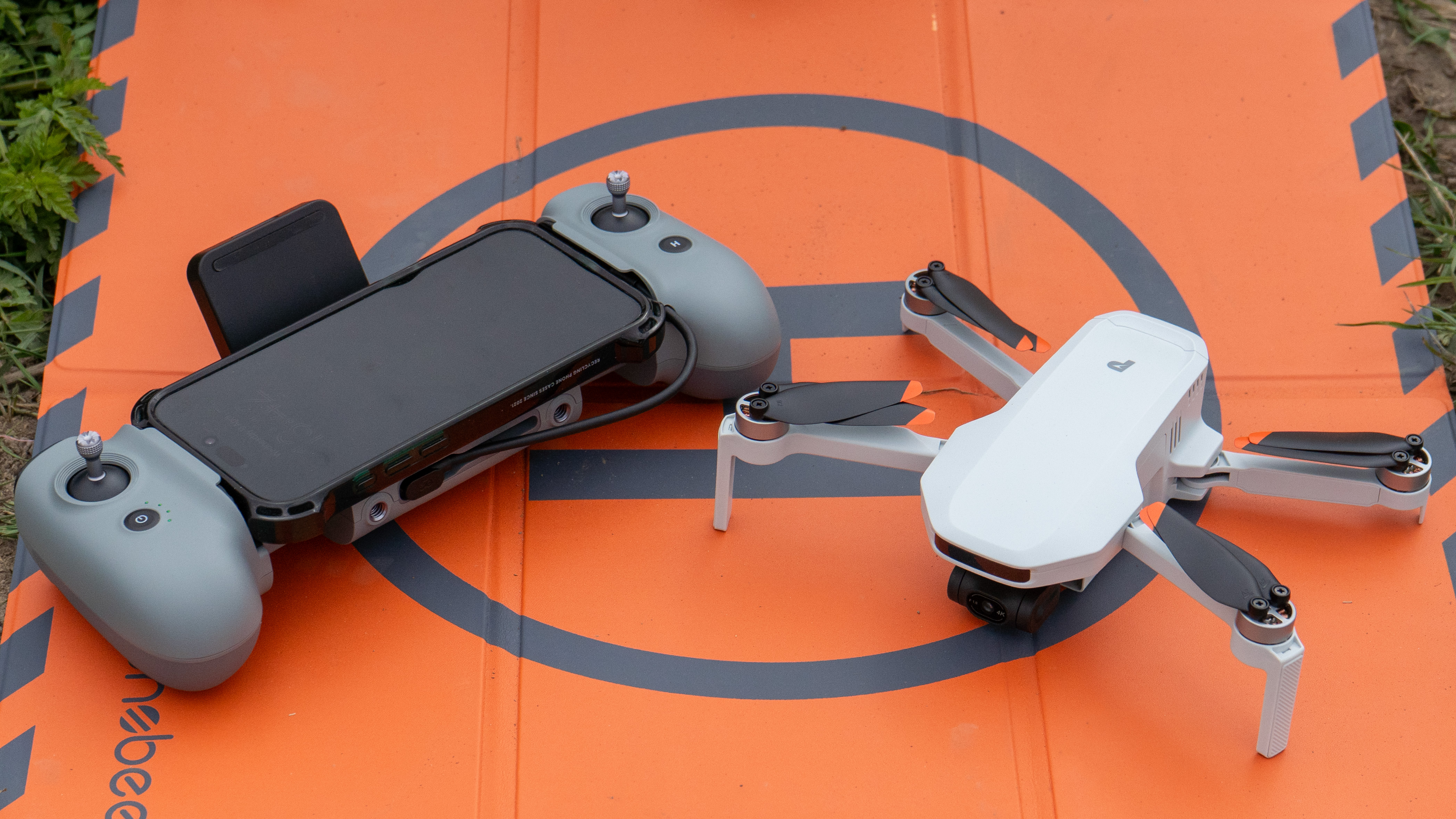
Potensic Atom 2: Price & Availability
At $329 / £299, the Potensic Atom 2 is no longer a significantly cheaper alternative to the DJI Mini 4K – an obvious comparison in terms of design and specs.
Clearly, Potensic perceives that the Atom 2 has reached a comparable standard on specs and quality (we'll see about that as we read on) and is aware of both DJI's legal difficulties in the USA (not to mention the uncertain trade environment) so is becoming less of a discount brand and taking its place alongside the premiums ones.
Potensic Atom 2: Specs
Video | 4K 30 |
Stills | 48MP |
Flight time | 32 min (theory) |
Weight | 249g (below registration in USA & UK) |
Image Sensor | 1/2-inch CMOS |
ISO | 100-6,400 or 25,600 "Night Mode" |
Range | 10km (6.2 miles) |
Required accessories: | MicroSD card, Phone (iOS or Android) |
Size | 8.3 x 6 x 2.3 inches (unfolded) |
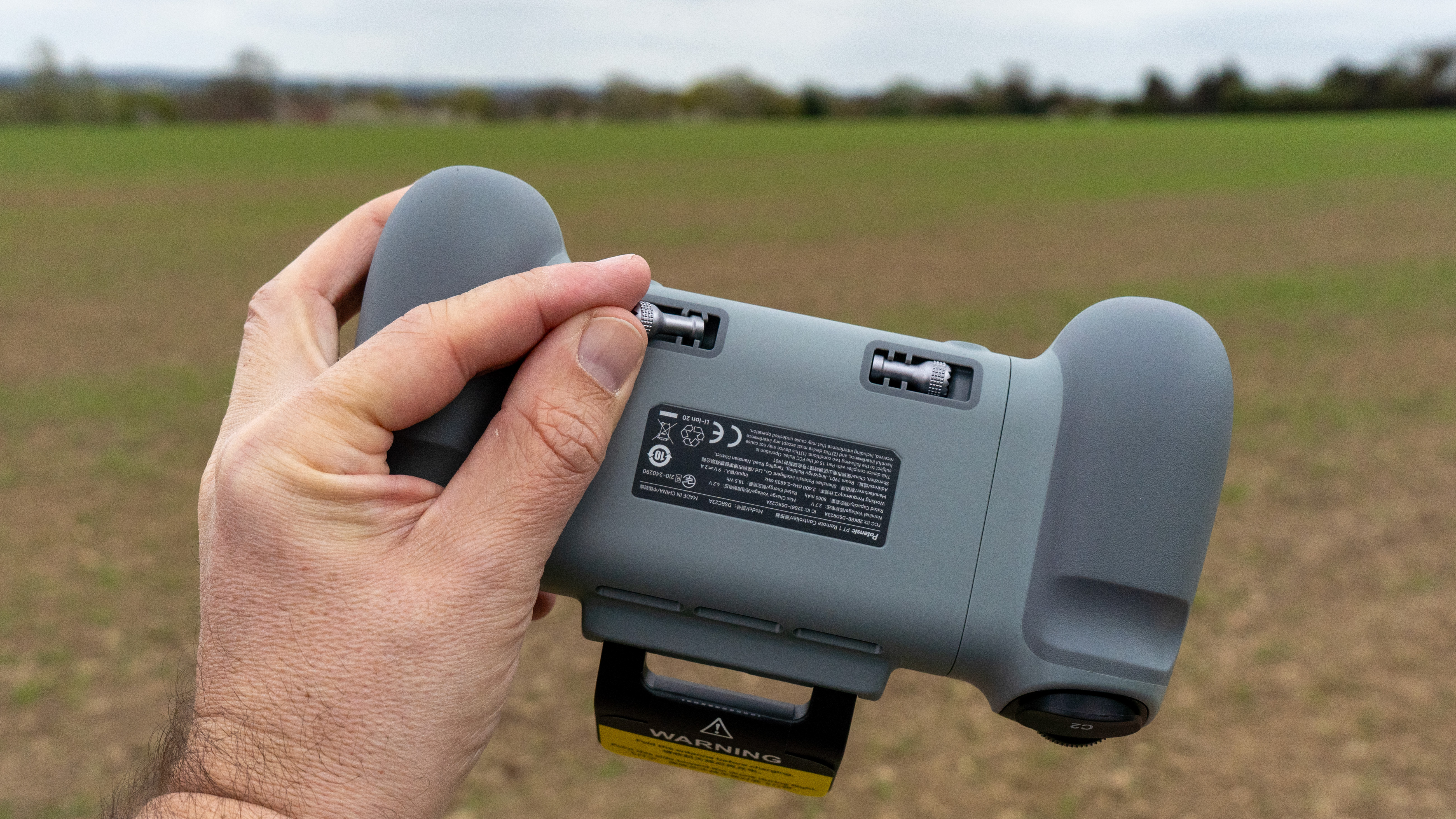
Potensic Atom 2: Build & handling
If you've flown the Atom (1), then the new drone will present no surprises. It seems to be built on the same airframe, a slightly more angular version of the DJI Mini 2 drone design that has stood the test of time these last few years (and is now sold as the Mini 4K). My only tip is that you'll want to get yourself a simple folding drone landing pad to keep a quadcopter like this in good condition.
The big change to the Atom 2's design is to the controller, which – though similar in concept – is an all-new moulding, and a lot more successful in my view. It feels more premium. It was able to grip my iPhone 16 Pro Max, in the unusally large lumpy case I use and connect the cable, with no problems at all.
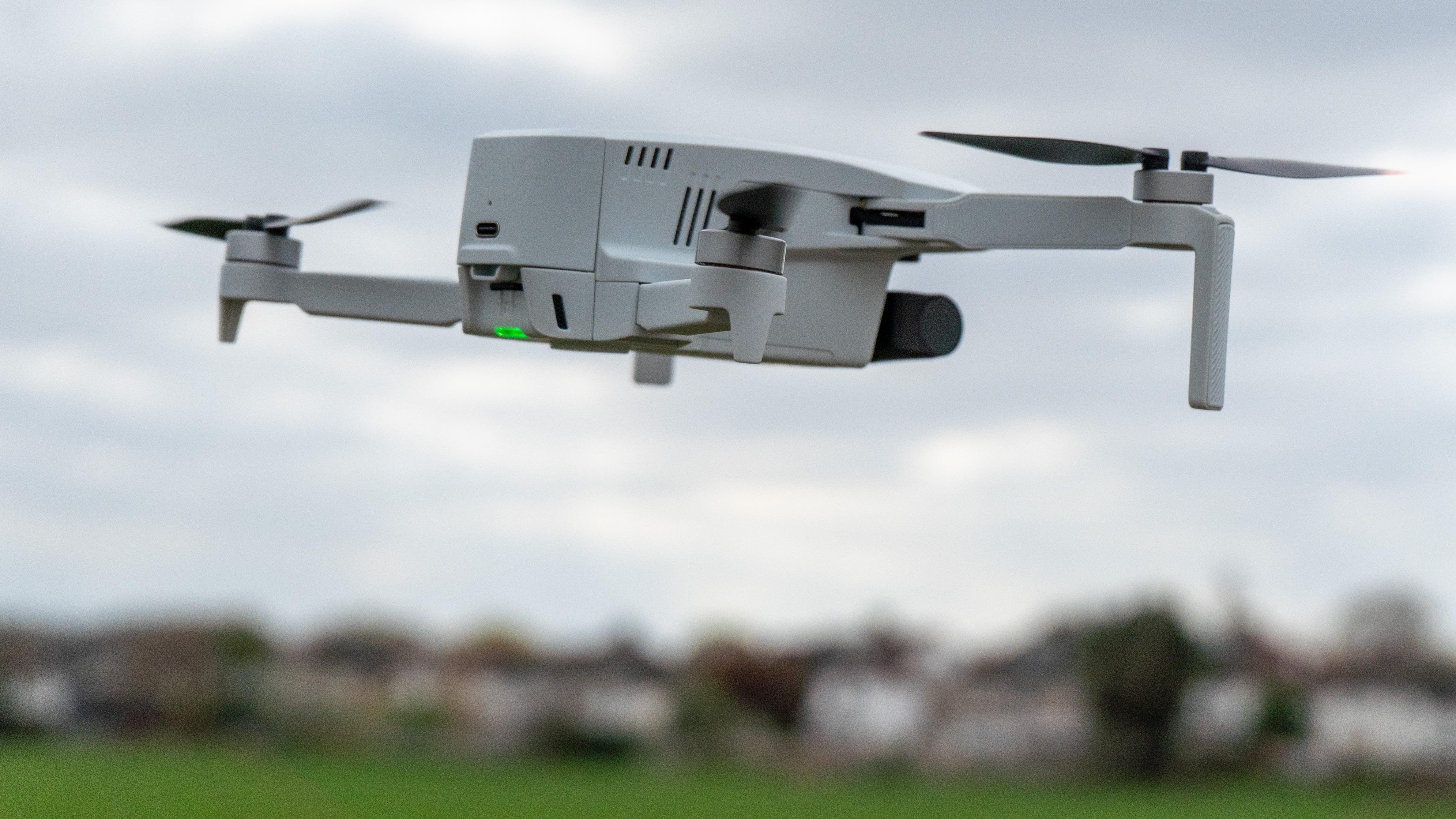
As part of the revision, high-quality rubber grips have been placed in the back to store the removable sticks. These are made of good quality metal that just looks good, while the antenna is now a single hinged part which is much easier to open and close and looks more professional into the bargain. Good show.
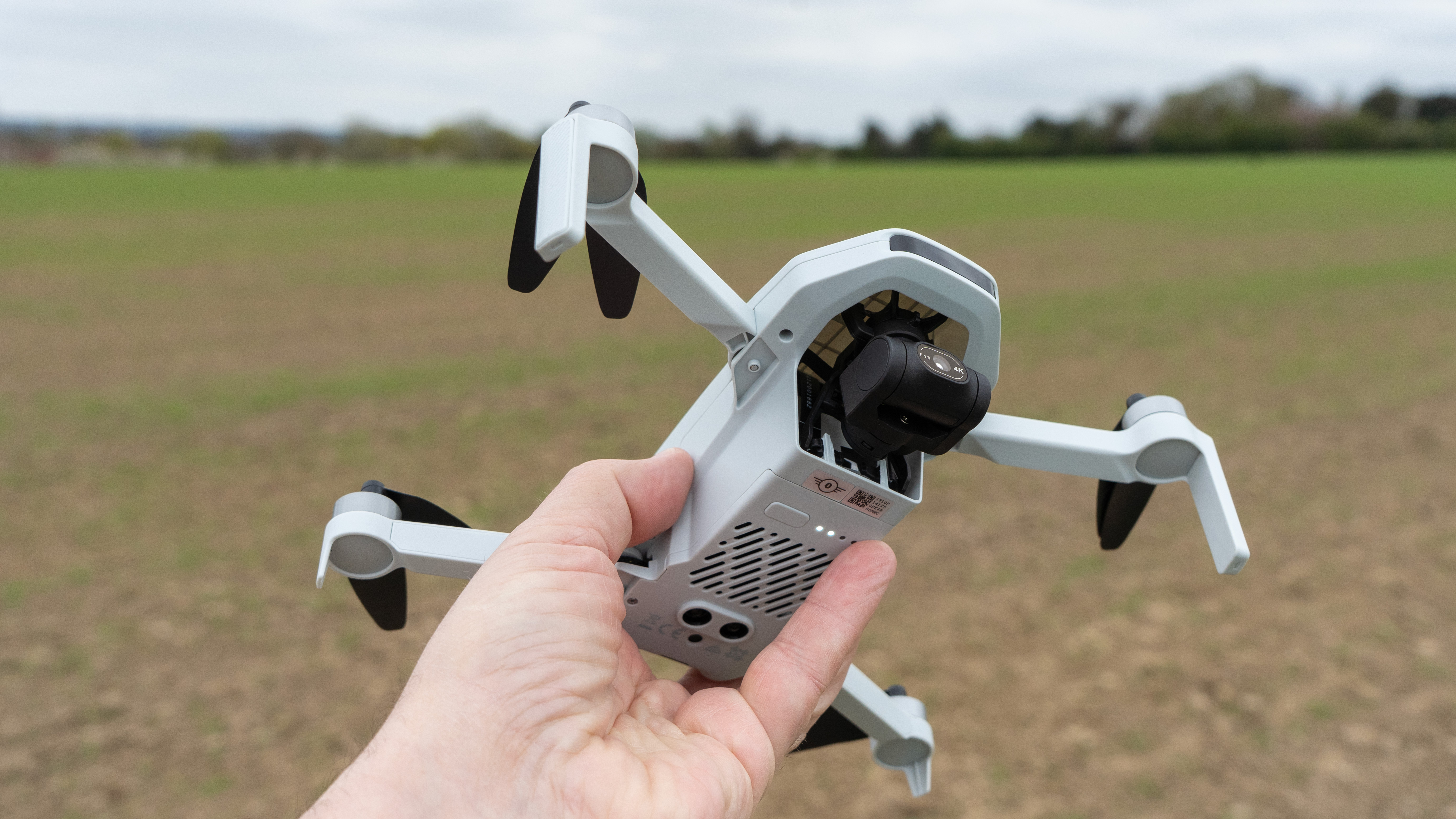
It's odd that the design has changed so much and so little. There is an altogether new camera sensor, the results of which are very apparent in the performance, and the design of the venting on the underside is very different – but otherwise the key features (including optical flow and distance sensors) are identical. This means you can feasibly use the drone indoors if the lights are on.
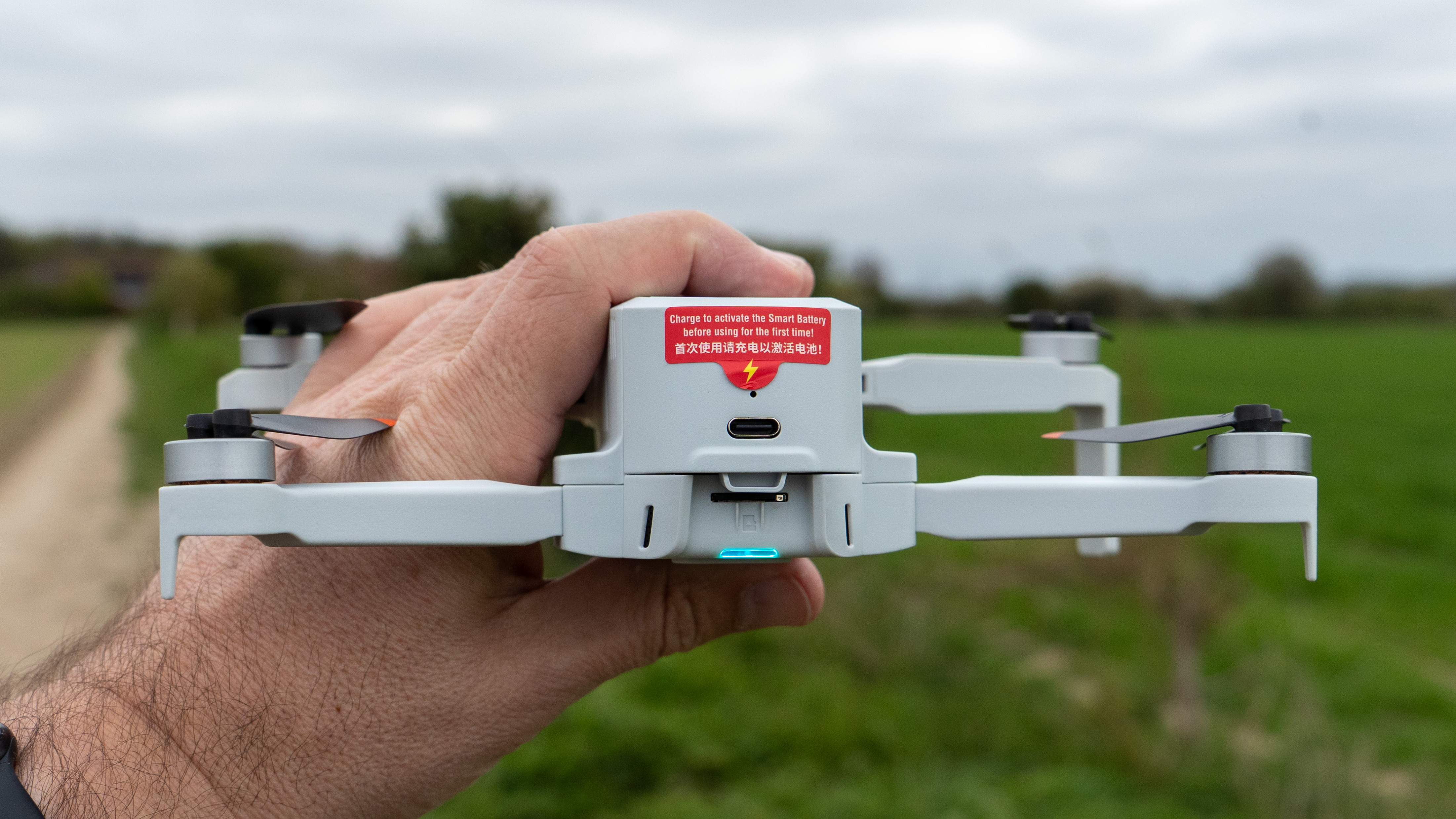
I tested the fly more kit, and something I found a little strange was that the power supply to the 3-battery charging hub used a barrel-style connector rather than USB-C (though it can output USB-C). A suitable plug was supplied and it seemed to do the business rapidly enough, but it seemed strange in a world of otherwise increasingly standardised parts!
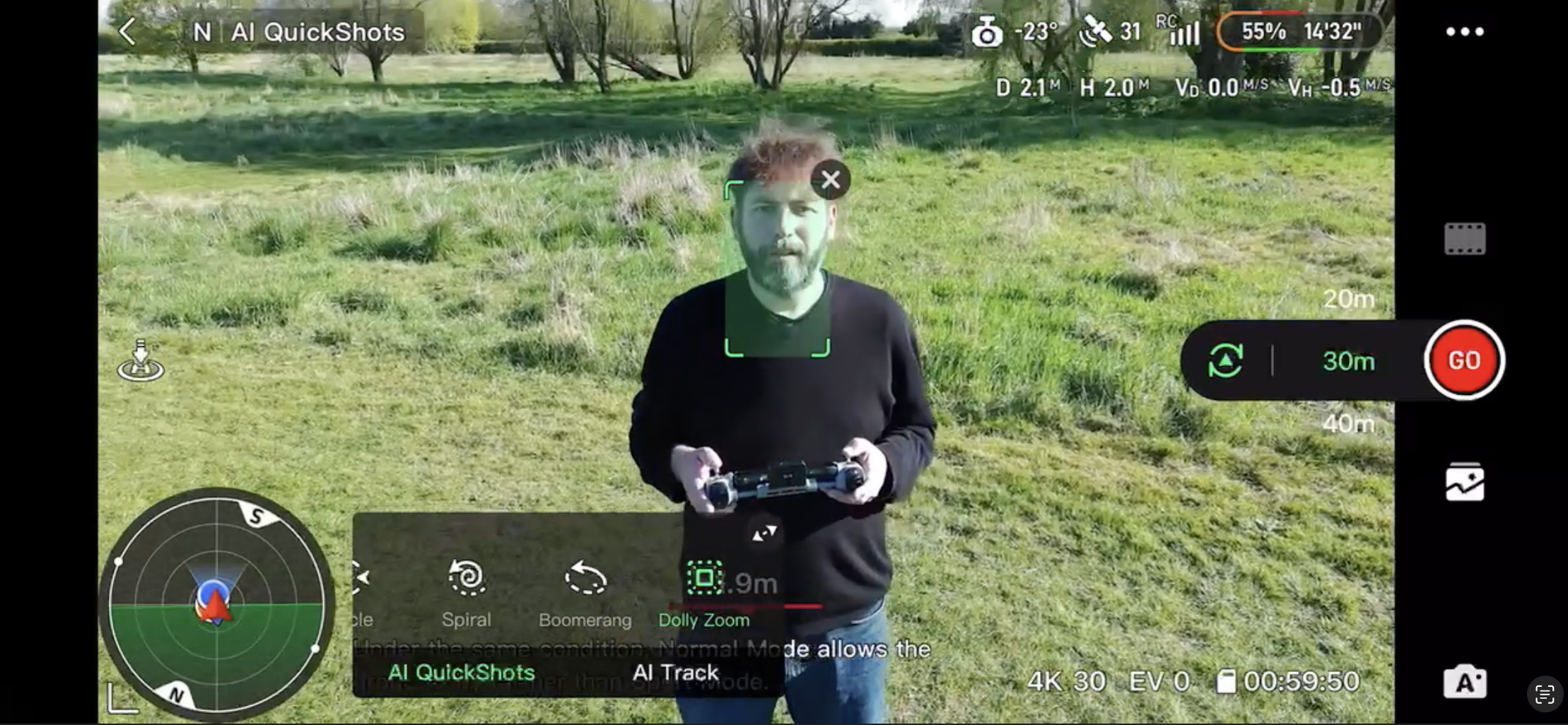
Imaging performance is significantly enhanced over the drone's predecessor, thanks to a combination of the new camera and the new app, now called Potensic Eve.
Potensic Atom 2: Performance
The new app is quick and responsive, and the drone is easily commanded through the air. The three modes – video, normal, and fast – provide useful options and help reign in the kids too.
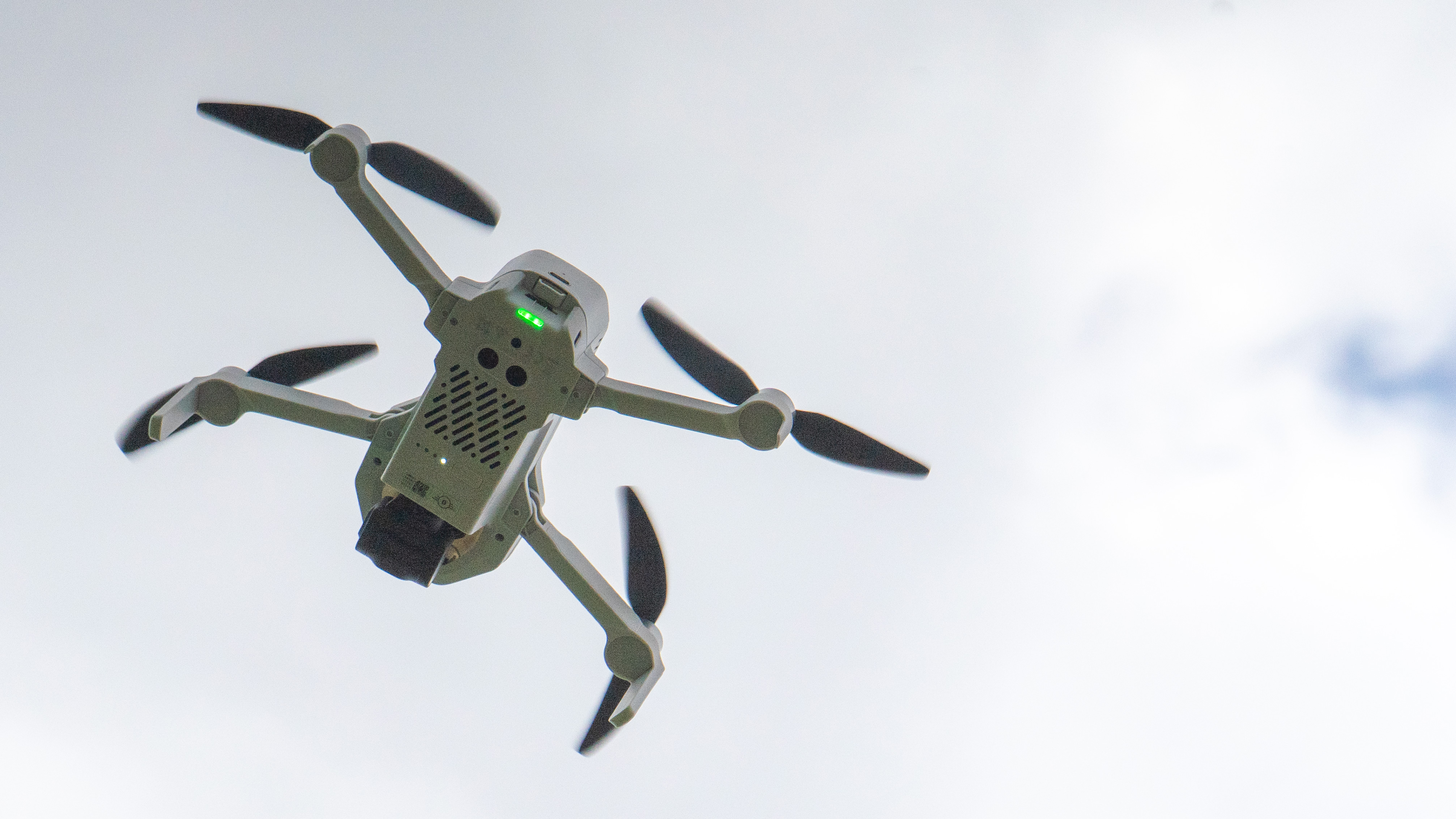
Brilliantly, too, the drone seemed stable and confident even when the gusts reached the upper end of its recommended force 5 level, meaning the device felt trustworthy.
I had no connection issues when testing, even though most of the locations I test in are land near London so have a good amount of potential RF interference, which speaks well of the extended radio range and the new controller. I spotted a couple of momentary quality drops in the 1080P live view, but no more than other devices and ever enough to lose control.
Potensic Atom 2: Sample images
The camera is capable of a good range of detail, and the auto exposure adapted well to sunny and cloudy conditions.
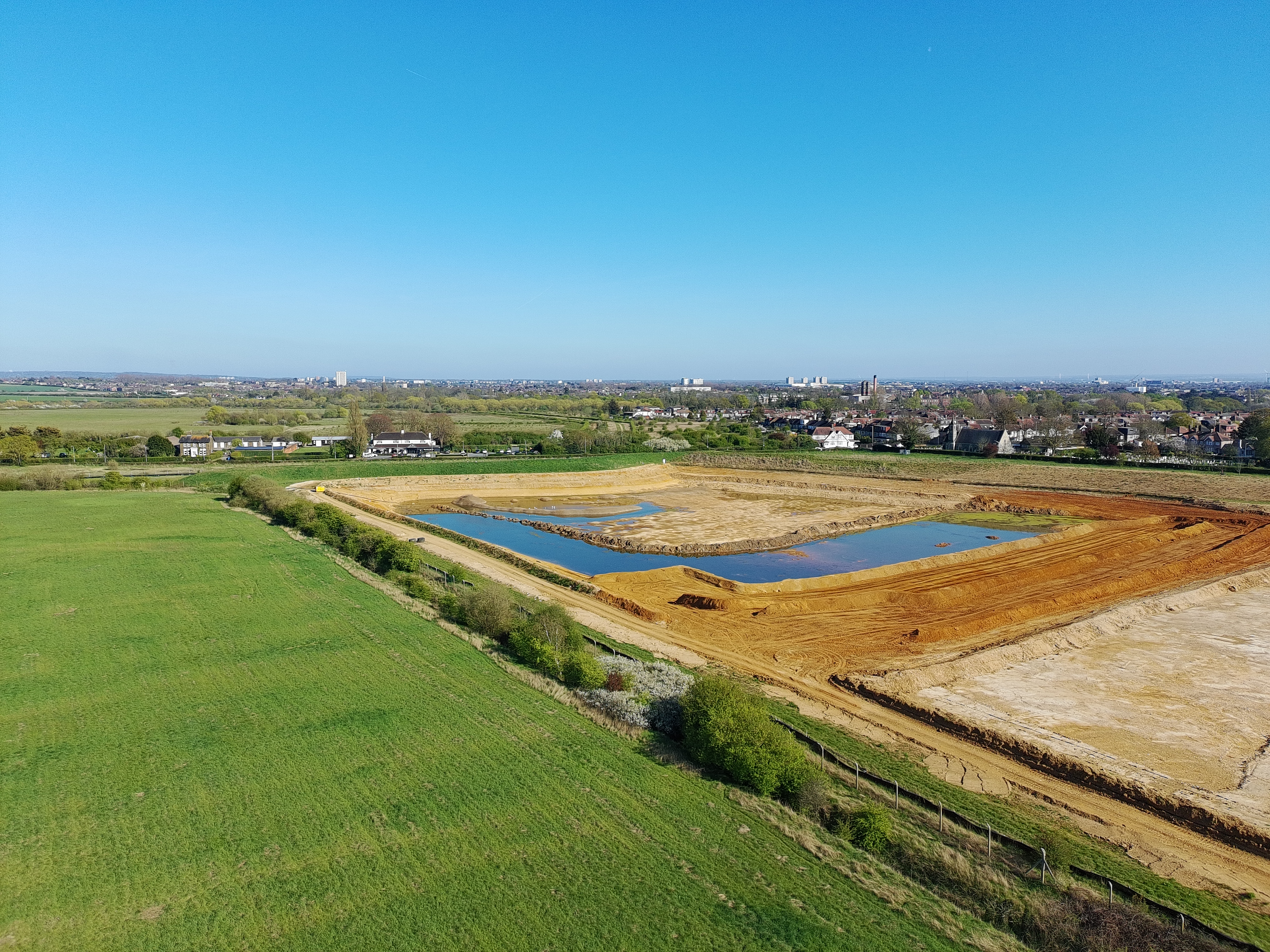
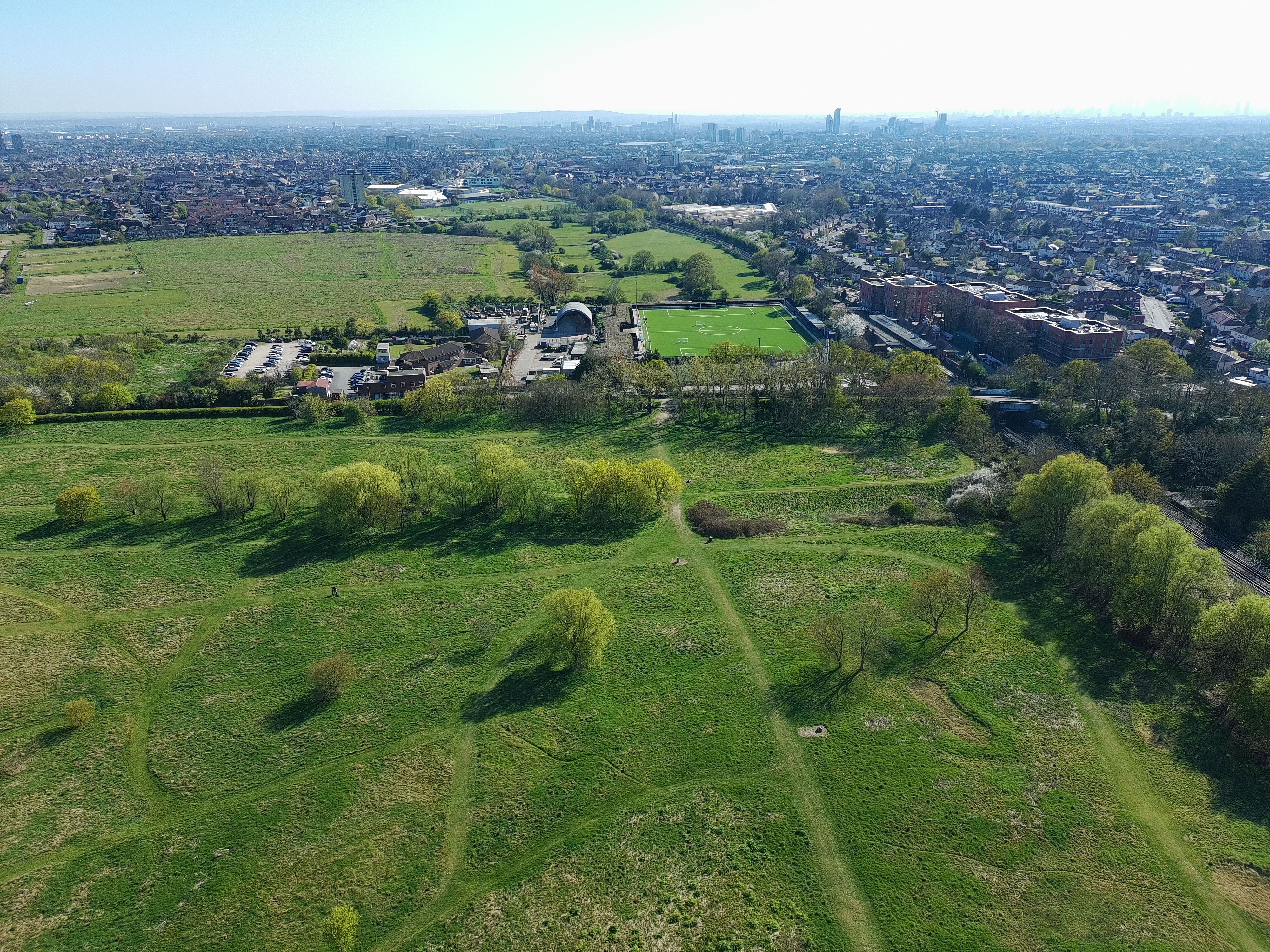
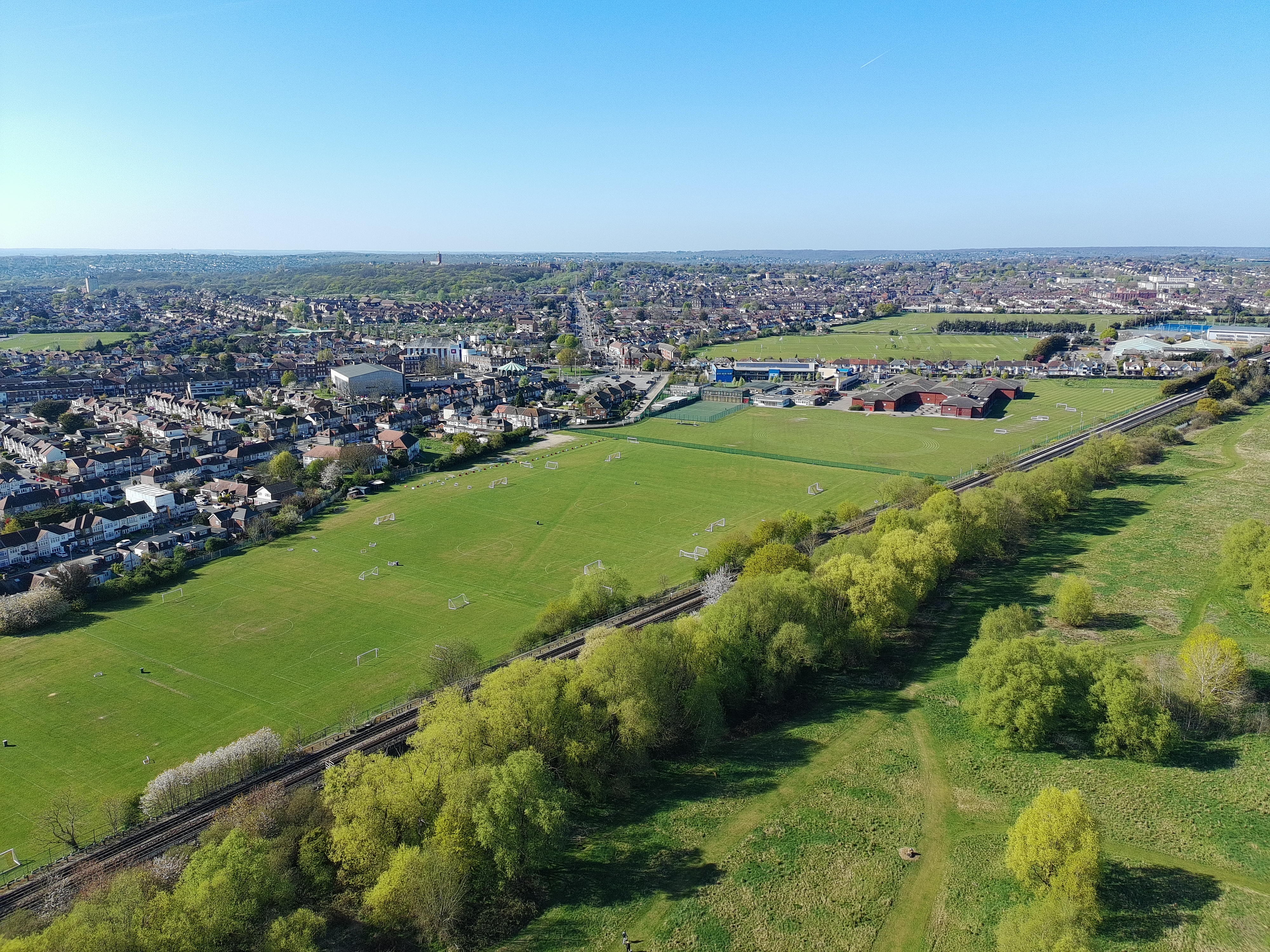
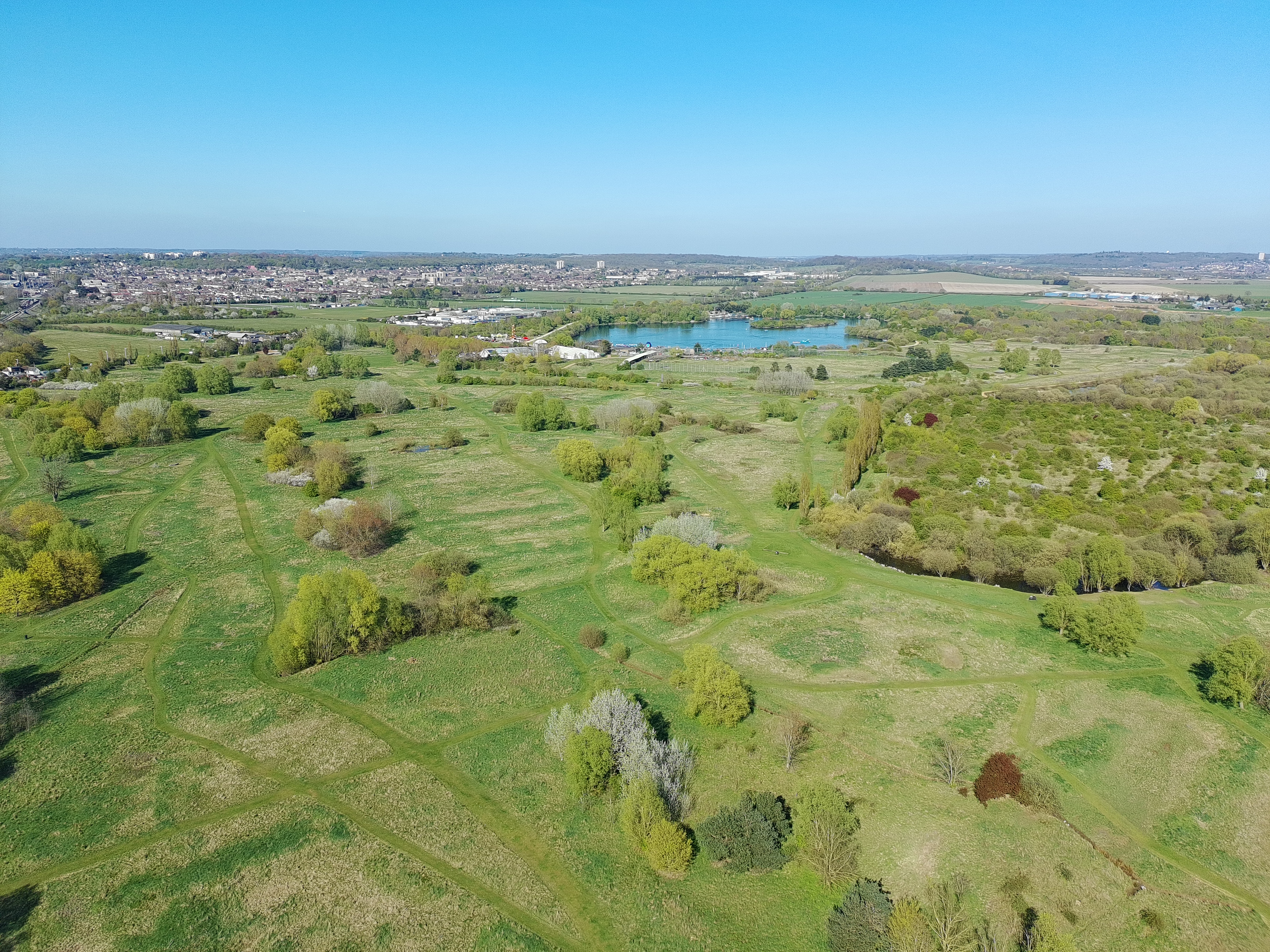
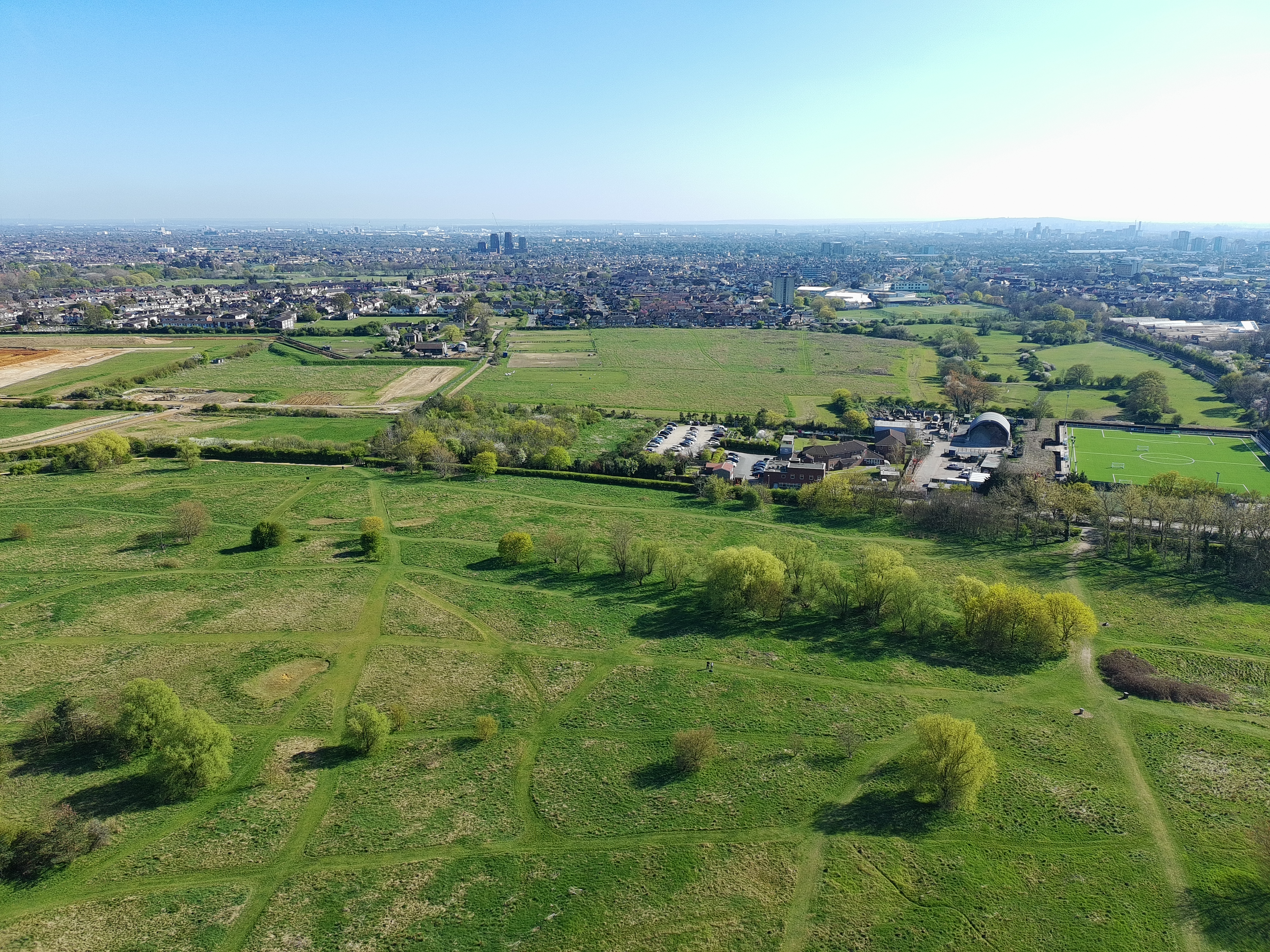
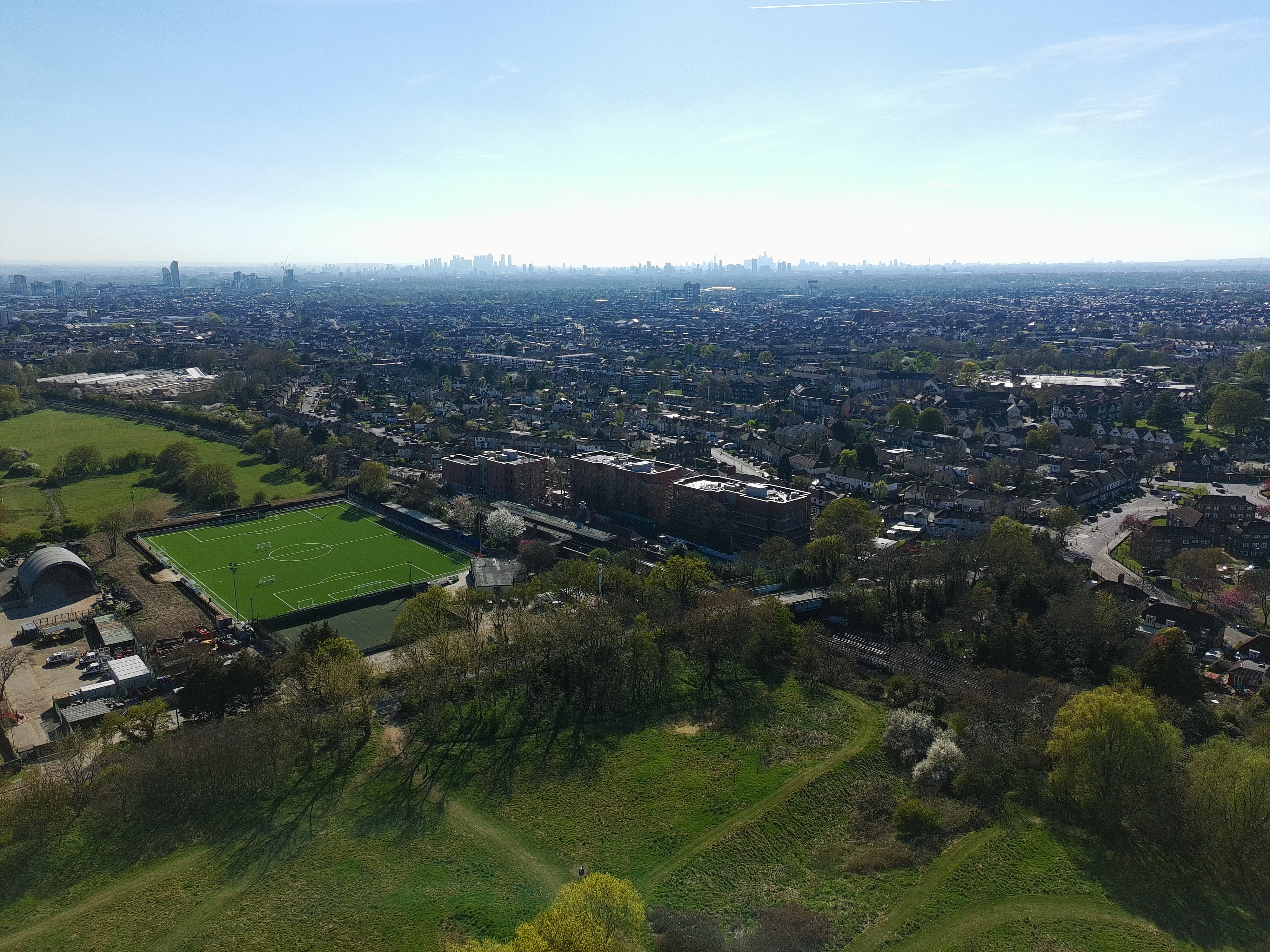

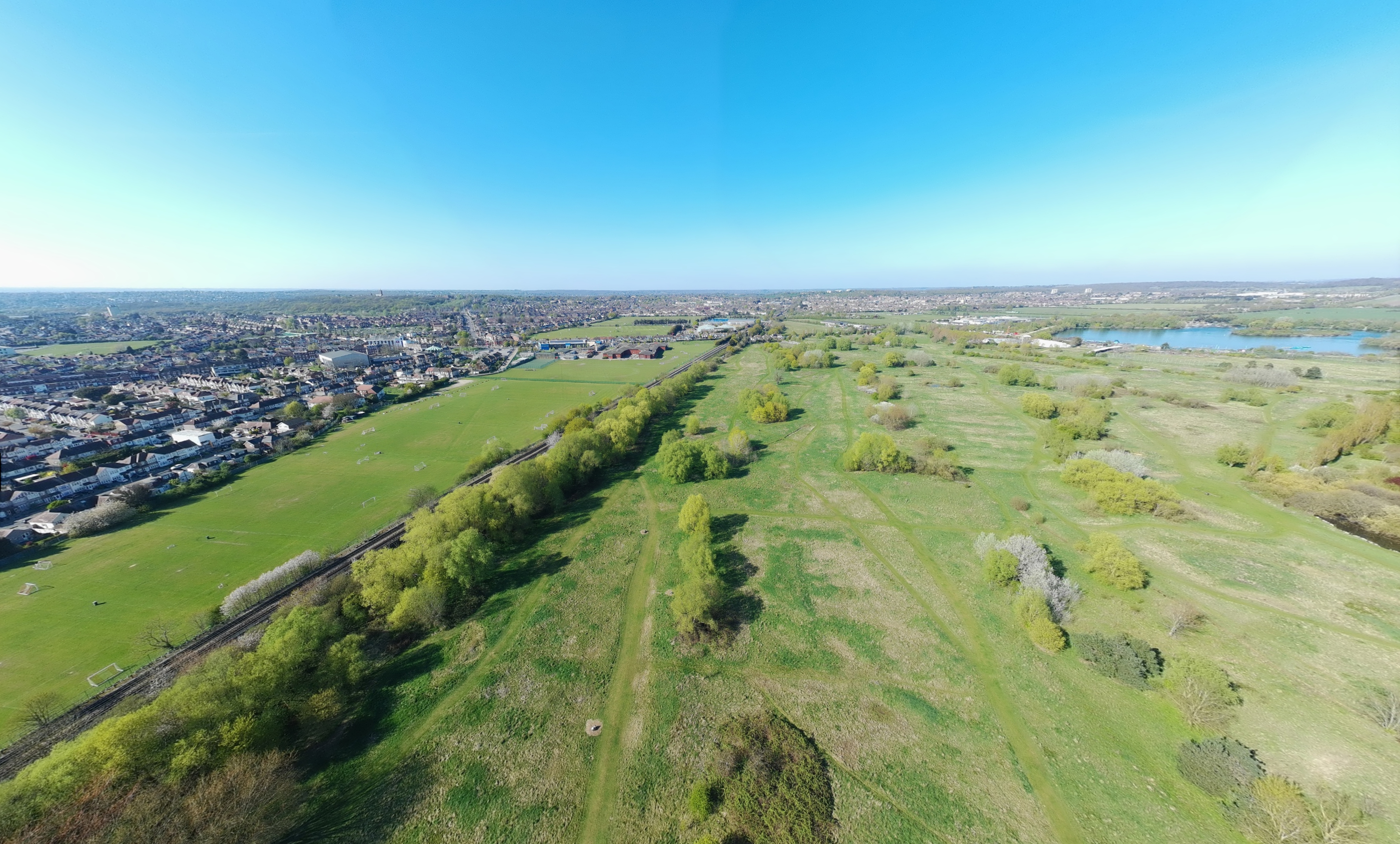
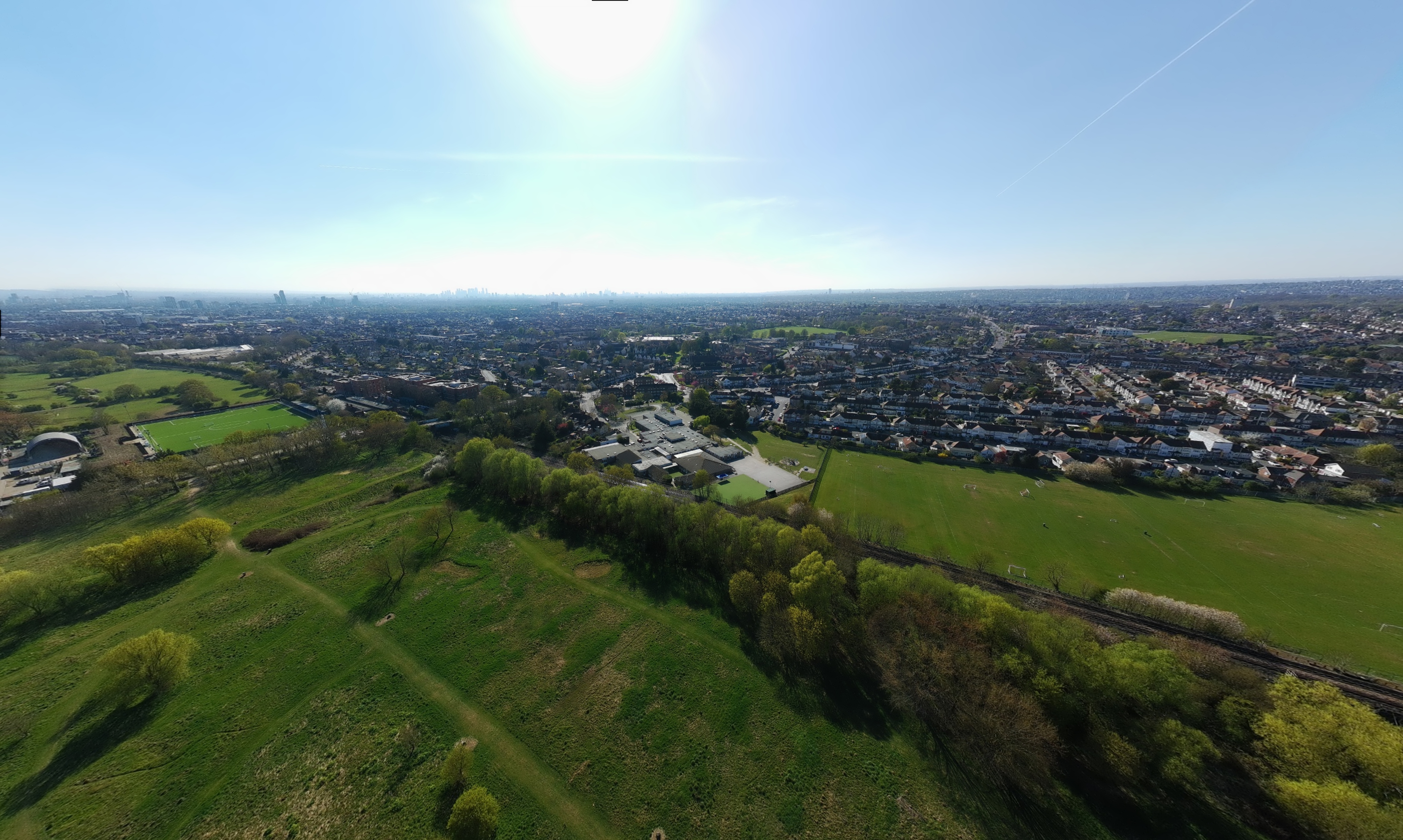
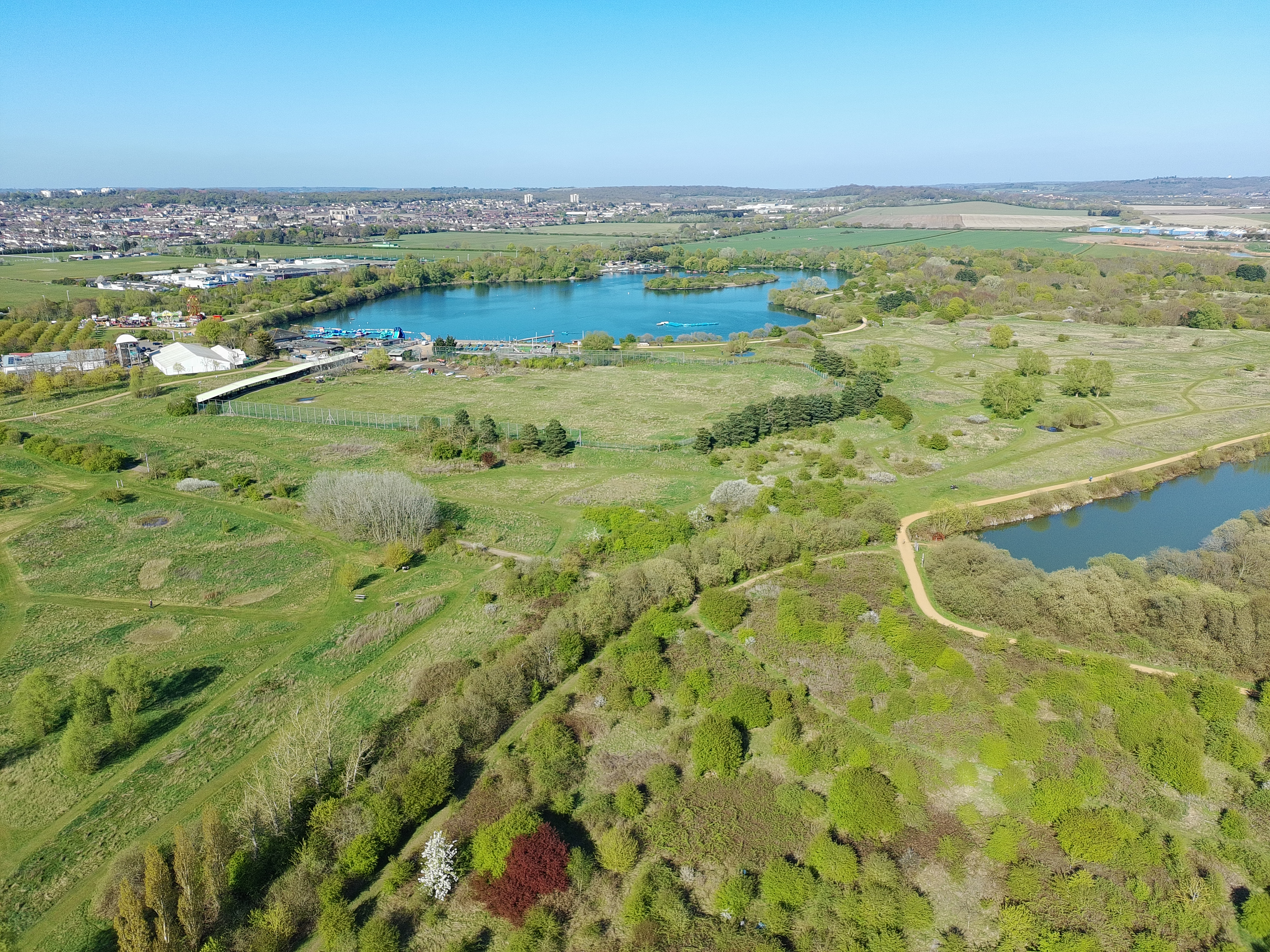

Potensic Atom 2: Sample Video
The camera's video performance is surprisingly good, and perhaps more significantly, the subject tracking is as smooth as the leading brand. As you'll see in my clips, I tried the drone in sunny and cloudy conditions, as well as features like the 'Dolly Zoom' effect.
My son also took charge of the drone and seemed to have little trouble mastering the image capture tools (he was even quite happy to lend me advice when it was my turn!)
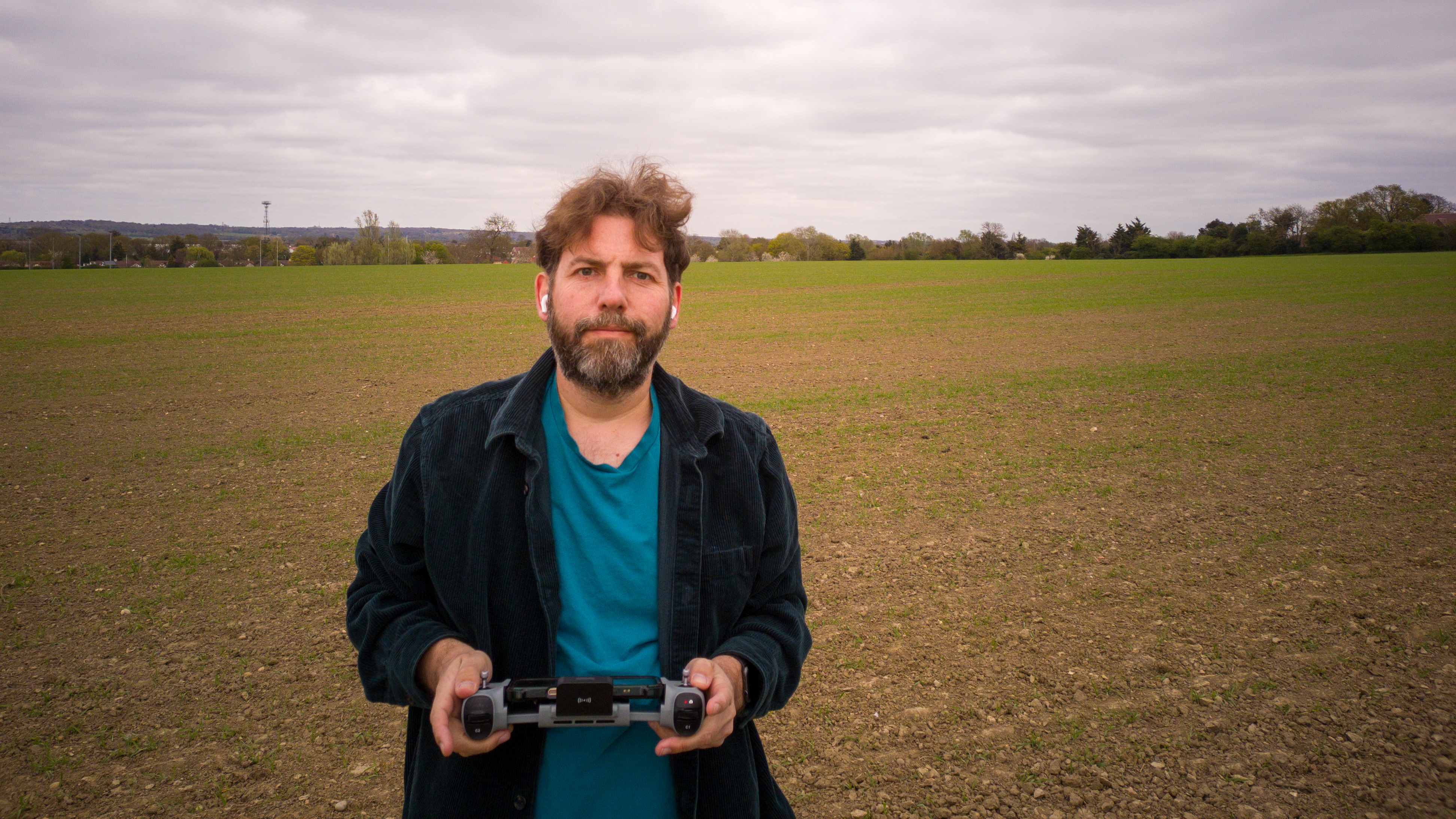
Potensic Atom 2: Overall verdict
It shouldn't have surprised me how good the Atom 2 is, given the strengths of its predecessor, but it still did a little. It's always refreshing when a drone gets a camera upgrade you can see, and this is definitely one of those. The output is competitive with drones that cost more.
Operating the drone is also a very positive experience; the app and Atom 2 work together to offer a great choice of AI assistance. I was especially impressed with the subject tracking – which makes it a lot easier to keep someone or something in a smooth shot, but the automatic shots are also very cool for quick social
In terms of gripes, I think some of my favourite geeky features (*cough* waypoints) may have been temporarily or permenantly sacraficed in exchange for the newer ones, and I would like to have seen some more significant styling improvements to the airframe (perhaps it's time to look to the DJI Flip for inspiration), but for most people these won't matter.
The arrival of the Atom 2 means, I think, that – if you can't buy DJI because your government is restricting your freedom (I'm looking at you, America) then (at least in the ultralight category) you won't really miss out. This is a drone I was happy to use, and my young son was comfortable navigating the app. Well done, Potensic!
Features | With GPS, 4K camera, a Night Mode, subject tracking, fast file transfer and a >6 mile radio range, all the features you'd expect of an ultralight drone are here. | ★★★★☆ |
Design | The Atom 2 itself is functional and smart, if not beautiful (which would earn the last star). The new controller is a full 5-stars though; excellent, robust-feeling and elegant at the same time. | ★★★★☆ |
Performance | Even in a cross-wind, the drone gave me no worries in flight. The camera is impressive for the form factor, and the new app's software is miles better boasting truly dependable subject tracking. | ★★★★★ |
Value | Coming in at significantly less than similarly specified drones, the Atom 2 is impressive. Moreover Potensic no longer feels like a compromise brand. | ★★★★★ |
Potensic Atom 2: Alternatives
The DJI Flip is the latest drone in this legally-easy weight category from the world's leading drone company. It costs a bit more, but that buys you the option to hand-launch AI tracking in 'selfie mode' (meaning you don't even need the remote controller). Better still, I found the folding design surprisngly robust, yet portable & pocket friendly.
The DJI Neo is the one of the cheapest drones you can get and although the camera isn't as good, it's still 4K. If low cost of entry is your first criteria this is worth a look. It also boasts AI tracking, or you can use your phone as a remote controller. Optional (extra cost) upgrades include a classic radio controller and even FPV control options, so it's worth a look.
How I test drones
As an expert who has tested hundreds of drones over the years, I always think it's best to try the drone in out in the field, ideally in differing weather conditions so you can get a good idea of how the camera handles differing light and how the drone cope with wind, so that's what I did here.
Additionally, since a drone is always of interest to a family, I always try to get the input of my son, now aged nine. A drone like the Potensic Artom 2 can be flow by responsible and supervised kids and, in truth, my lad had no trouble with it.
You might also like
If you're interested in the Atom 2, check my guides to the best camera drones, the best beginner drones, and the best drones for kids. As an alternative where you can't use a drone, you might also try the best 360-degree cameras.

With over 20 years of expertise as a tech journalist, Adam brings a wealth of knowledge across a vast number of product categories, including timelapse cameras, home security cameras, NVR cameras, photography books, webcams, 3D printers and 3D scanners, borescopes, radar detectors… and, above all, drones.
Adam is our resident expert on all aspects of camera drones and drone photography, from buying guides on the best choices for aerial photographers of all ability levels to the latest rules and regulations on piloting drones.
He is the author of a number of books including The Complete Guide to Drones, The Smart Smart Home Handbook, 101 Tips for DSLR Video and The Drone Pilot's Handbook.
You must confirm your public display name before commenting
Please logout and then login again, you will then be prompted to enter your display name.
